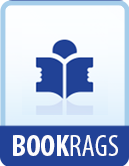By the Rev. T. Wilson.
“This work may he regarded as a sequel to the ‘Mother’s Question Book,’ which the author has, in his style and method, followed as a model. It presents an immense quantity of interesting facts to the young mind, and affords information of the most useful kind rendered clear and simple.”—Journal of Education.
Specimen of the questions.
“What is meant by the terms art and science?” “What are the principal of the arts?” “How are they distinguished?”
Neatly and strongly bound in cloth,
Lessons on natural philosophy, for children,
By the Rev. T. Wilson.
“These Lessons consist of initiatory information upon the Phenomena of Nature, the Mechanical Powers, Astronomy, Geography, Light and Heat, Electricity, Attraction, Chemistry, Magnetism, and include a great variety of valuable matter, condensed and simplified in a very clever manner by the author.”—Monthly Magazine.
Specimen of the above.
“When you open a door, what is the weight that you move?”
“When you throw a ball, what becomes of it?”
“What makes the weight go down to the bottom of a clock?”
Gutta PERCHA, & its uses to man.
With coloured plates.
Foolscap 4to. and Wrapper printed in Gold, price 1s.
JUVENILE AND EDUCATIONAL.
Strongly bound in cloth, in 18mo.,
The mother’s question book;
Or,
Child’s first Guide to knowledge,
Comprising the first, second, and third mother’s Catechisms,
By the Rev. David Blair.
“The name of Dr. Blair is identified with elementary knowledge; and these, the genuine productions of his pen, are well worthy the attention of the parent and teacher.”—Educational Magazine.
Specimen of the above from page 52.—“Q. What are the objects of all manufactures?”
“A. To make the necessaries and conveniences of life; as clothing, tools, and furniture.”
“Q. Of what is clothing made?”
“A. Clothing is made of wool, flax, cotton, silk, or leather; and there are great manufactures of each of these.”
“Q. Of what are tools made?”
“A. Of wood, iron, steel, and brass.”
“Q. Of what is furniture made?”
“A. Of oak and deal, with brass ornaments, with beds of cotton or linen, and hair mattresses or feather beds.”
The Early educator,




